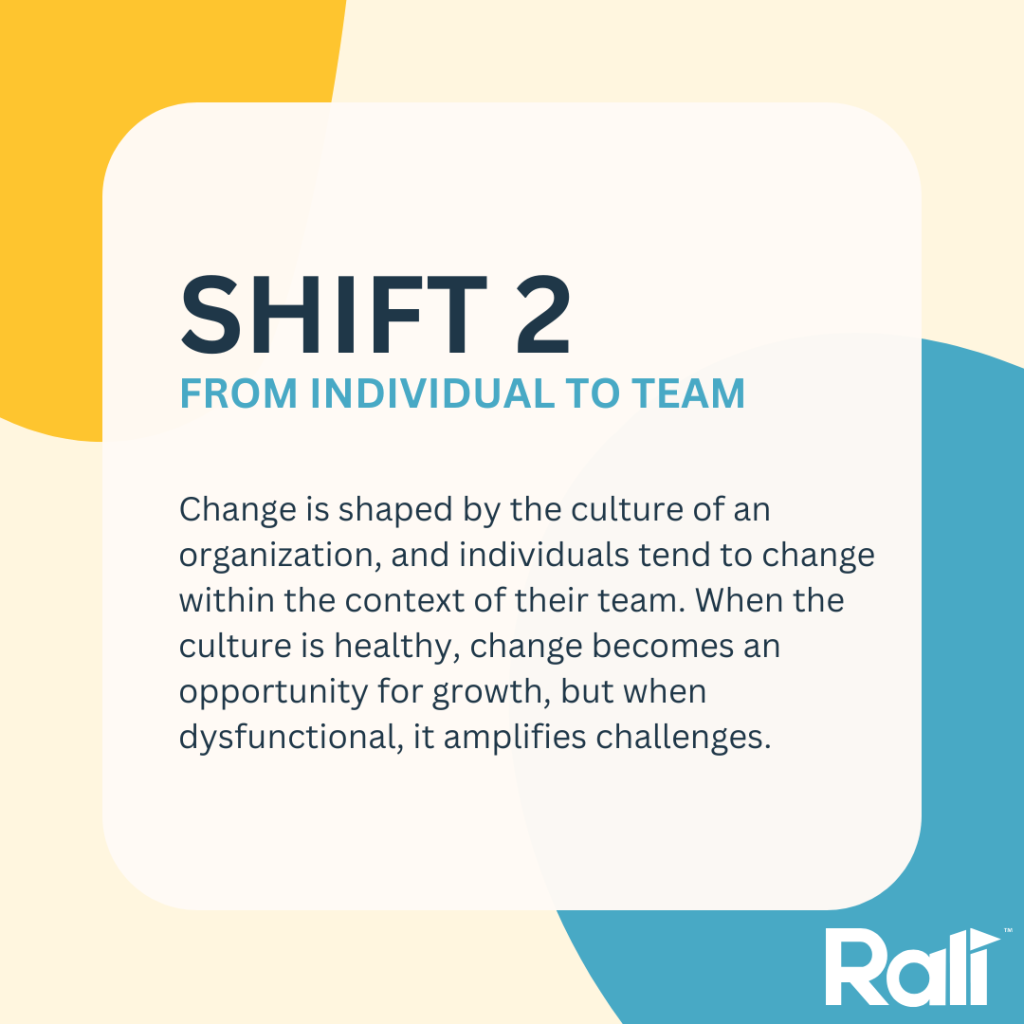People usually believe that change starts at the individual level. The idea is that if the individuals change, the organization will follow suit. Although personal transformation is important, the true nature of change is more complex. Organizational change does not happen in isolation—it happens within teams.

The Impact of Company Culture on Change
Company culture profoundly influences organizational change and is especially evident in small groups. Teams serve as representatives of the broader organization, highlighting strengths and weaknesses during times of transition. When teams have a healthy, collaborative culture, change becomes an opportunity for growth, innovation, and deeper relationships. Team members learn to work together more effectively as they leverage the diverse strengths of their peers.
On the other hand, when teams are dysfunctional, change can increase inefficiencies, making transformation more difficult. Instead of encouraging collaboration, change can uncover underlying issues, conflicts, and resistance, slowing group progress.
Making the Shift for Team Change
Successful change management means organizations must shift their focus from individual change to team transformation. This requires preparing teams and their leaders with the skills to align, overcome disagreements, and work together. When teams function at peak performance, they accelerate change rather than act as a barrier to it.
When organizations understand the importance of team dynamics, they create opportunities for collective learning and mutual support. Offering these opportunities is essential to creating sustainable change and a healthy workplace culture.
Personality profiling and team exercises are two tried-and-true ways to enhance team effectiveness during change periods. These tools increase communication, collaboration, and conflict resolution skills, supporting successful transformation.
As teams learn to change their mindset and shift behaviors, they naturally improve their ability to adapt and grow in new environments. This creates a positive feedback loop, giving them more confidence to manage future changes.
Overall, successful change is not just about individuals, but the collective strength of teams. By establishing team effectiveness as a priority, organizations can create an environment where change is not just possible, but an opportunity for growth and success.
It’s time to shift the focus from individual change to the power of teams to drive meaningful transformation. To learn more about our 5 Shifts, view our eBook and be sure to follow along next week for more from our 5 Shifts Series.





